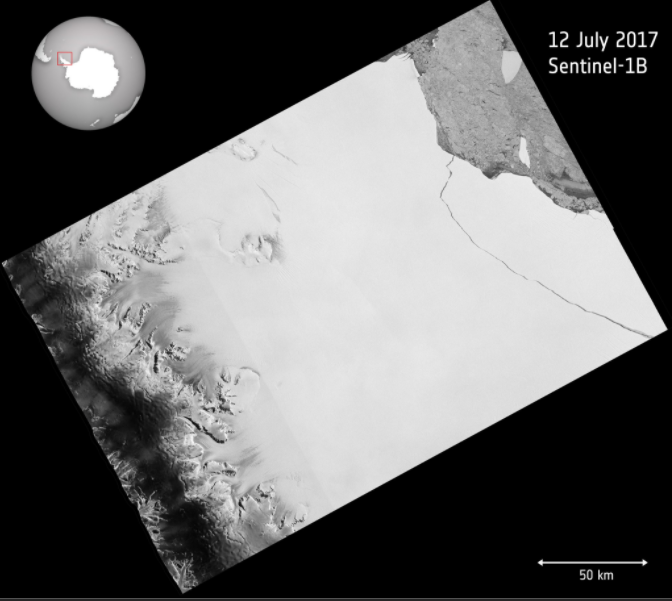A rift in the Larsen C ice shelf has finally ruptured, letting loose one of the largest icebergs on record and changing the geography of the Antarctic Peninsula forever. Scientists from the Swansea University-led Midas Project announced on Wednesday that the rift had finally made its way through ice and had been expected to happen for a long time. The iceberg is almost 2,200 square mile (5,800 square kilometre) big, and is almost times as big as the city of London. The size of the Larsen C Ice shelf itself has gone down by about 12 per cent after the event which took place somewhere between Monday and Wednesday. Scientists were monitoring the state of the ice shelf via satellites photos on NASA’s Aqua Modis.
Professor Adrian Luckman, of Swansea University, said: “We have been anticipating this event for months, and have been surprised how long it took for the rift to break through the final few kilometres of ice.” He was also of the opinion that the iceberg was unlikely to remain in one single piece but would break up into smaller pieces. The iceberg’s separation from the shelf is not going to affect sea levels though, as it was already floating in the sea before the rupture. Described as a natural event, scientists still warned that the rupture puts the Larsen C shelf in a very vulnerable position. Importantly, the neighbouring Larsen B shelf disintegrated after a similar event last year. Dr Martin O’Leary, a Swansea University glaciologist and member of the Midas project team, said: “Although this is a natural event, and we’re not aware of any link to human-induced climate change, this puts the ice shelf in a very vulnerable position.” The scientist though also said future collapses were decades away according to their models.
#BreakingNews: The new #LarsenC #iceberg weighs more than a million tonnes & contains almost as much water as Lake Ontario in North America. https://t.co/bMuSrKb5Th
— ESA EarthObservation (@ESA_EO) July 12, 2017
NASA releases images of the iceberg breaking off from Antarctica.
An iceberg about the size of Delaware split off from Antarctica’s Larsen C ice shelf sometime between July 10-12: https://t.co/zVs9hClbpK pic.twitter.com/gQVGsZ6APO
— NASA (@NASA) July 12, 2017
If the ice shelf keeps breaking up like this, it could cause the glaciers flowing on the land behind to speed up, leading to an eventual but modestly rise in sea levels, which is the real concern here for scientists.

